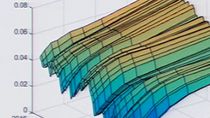Objective Drivability Calibration
The effect of the ECU on drivability can be dramatic, and requires time for proper calibration. Traditionally, experienced drivers test a vehicle during tip-in/tip-out maneuvers and provide a subjective drivability rating, iterating on ECU calibrations until the subjective feel is acceptable. Using simulation-based methods, it is possible to conduct much of this analysis up front using objective methods. By extracting key features from the acceleration results, an objective metric can be obtained. Formal optimization methods can identify a calibration set that provides a much better drivability response for the initial in-vehicle tests, thus reducing the overall time required. In this session, you will learn how MathWorks tools for data analysis, vehicle modeling, and calibration were applied to perform objective drivability calibration.
Recorded: 30 Apr 2019





